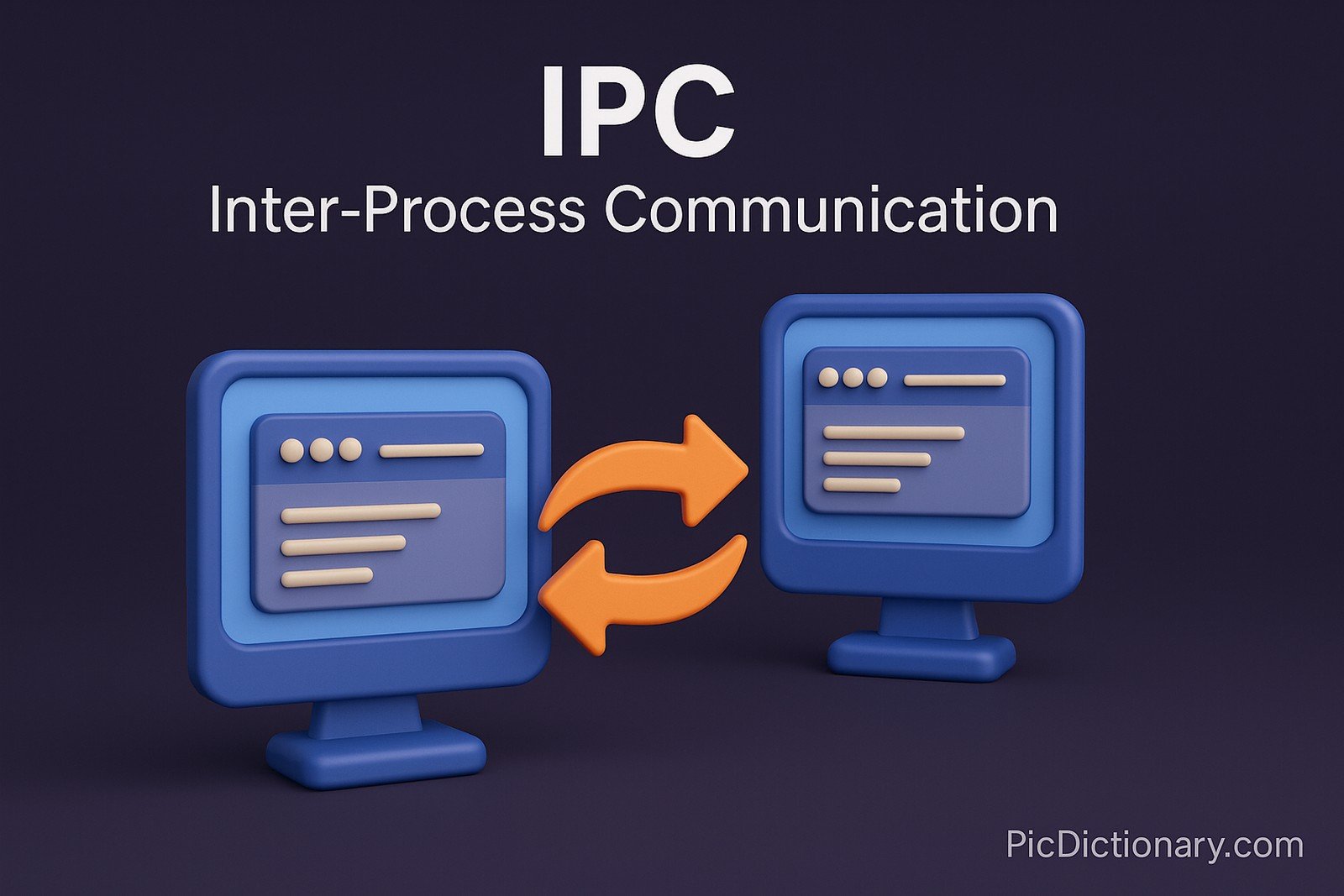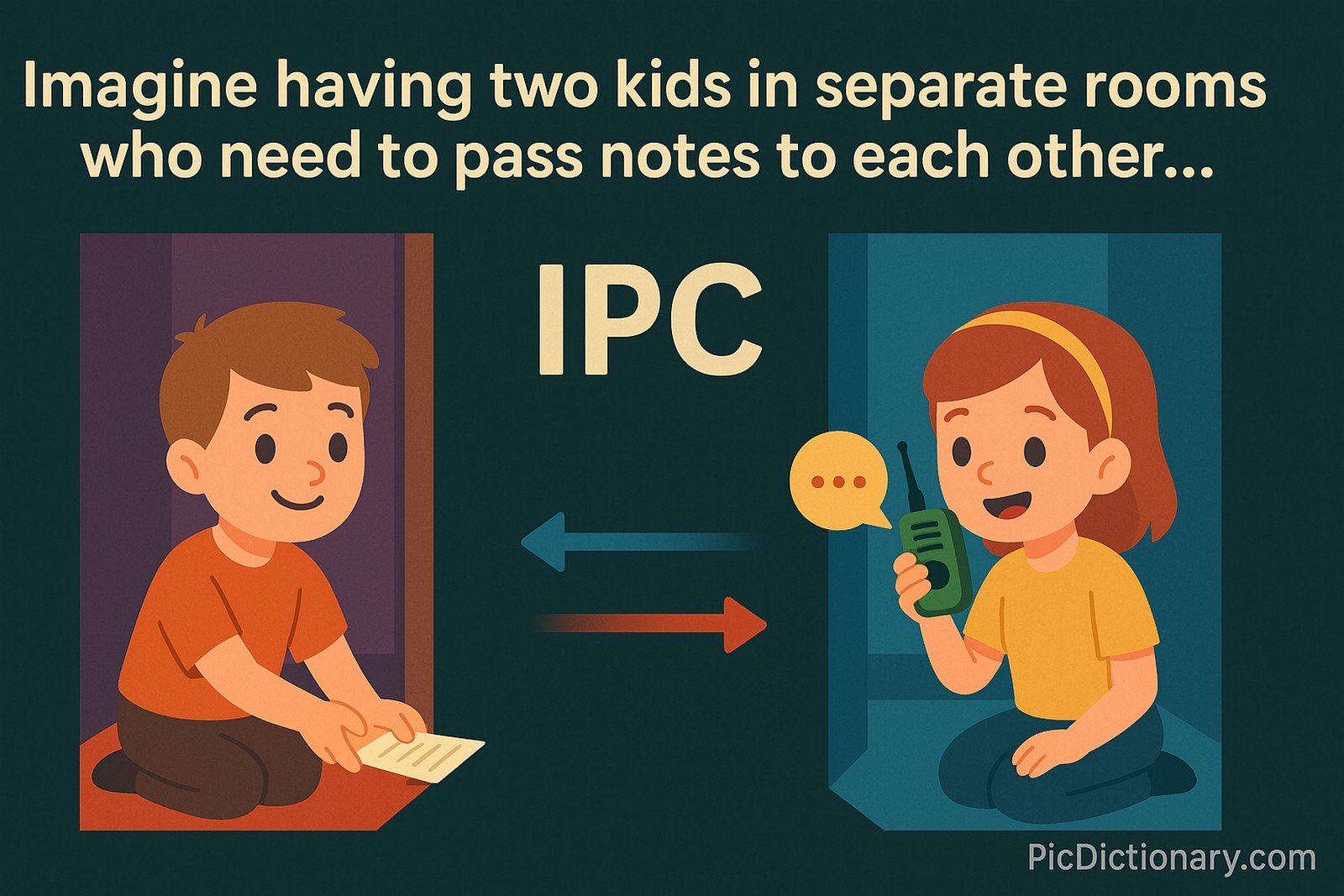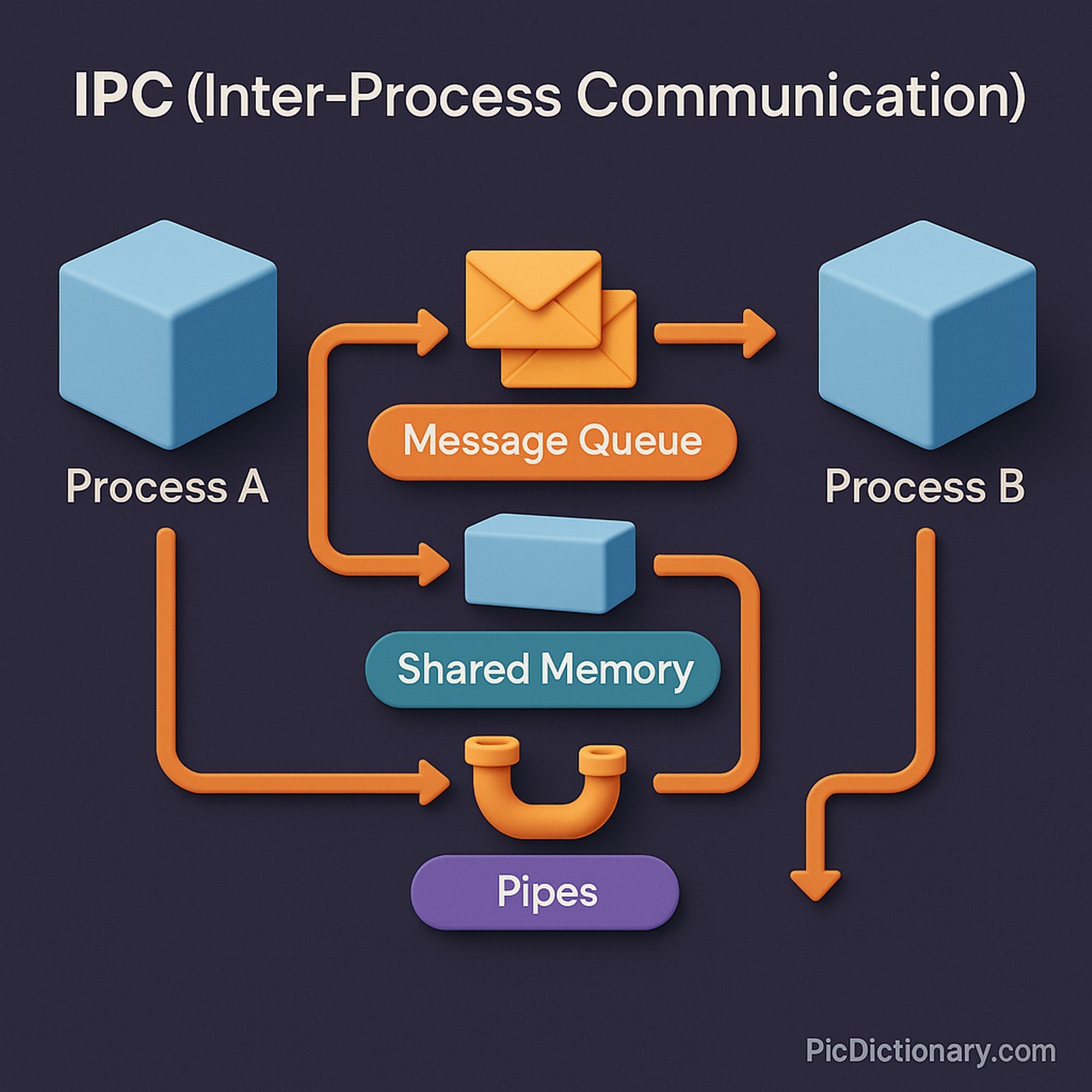IPC (Inter-Process Communication)

Quick Navigation:
- IPC Definition
- IPC Explained Easy
- IPC Origin
- IPC Etymology
- IPC Usage Trends
- IPC Usage
- IPC Examples in Context
- IPC FAQ
- IPC Related Words
IPC Definition
IPC refers to the set of methods and mechanisms that allow different processes running on an operating system to communicate and share data with each other. Processes are isolated by default, and IPC provides ways for them to exchange messages, signals, and data through techniques such as message queues, shared memory, pipes, and sockets. IPC is critical for developing multitasking systems and ensuring that independent processes can work together seamlessly, often found in operating systems, distributed systems, and client-server models.
IPC Explained Easy
Imagine having two kids in separate rooms who need to pass notes to each other. They can't talk directly, but they can slide notes under the door or use a walkie-talkie. IPC is like that for computer processes — it gives them safe and structured ways to exchange information without breaking the rules.
IPC Origin
The concept of IPC originated with the development of early multitasking operating systems in the 1960s and 1970s, as computing began to require coordinated tasks and processes. Early operating systems like UNIX pioneered many of the IPC techniques that are still in use today.
IPC Etymology
The term “inter-process communication” comes from combining “inter-,” meaning between, and “process,” referring to programs in execution, with “communication” indicating the transfer of information.
IPC Usage Trends
IPC has remained a crucial topic in computing, especially with the rise of parallel processing, cloud computing, and microservices. Today, trends show growing importance of high-speed IPC techniques in large-scale distributed applications and real-time systems, such as robotics, financial trading platforms, and Internet-of-Things (IoT) devices.
IPC Usage
- Formal/Technical Tagging:
- Operating Systems
- Distributed Computing
- Networking
- Software Architecture - Typical Collocations:
- "IPC mechanisms"
- "shared memory IPC"
- "socket-based IPC"
- "IPC performance"
- "IPC protocols"
IPC Examples in Context
- Operating systems use IPC to allow background services to communicate with user applications.
- In web servers, IPC enables worker processes to pass requests and responses efficiently.
- Video conferencing apps rely on IPC between audio, video, and network processes for smooth performance.
IPC FAQ
- What is IPC?
IPC is a set of methods for different processes to communicate and share data. - Why do processes need IPC?
Processes need IPC to coordinate actions, exchange data, and work together efficiently. - What are common IPC methods?
Shared memory, message queues, pipes, sockets, and semaphores are widely used IPC methods. - Is IPC only used in operating systems?
No, IPC is also used in distributed systems and cloud architectures. - How does shared memory IPC work?
Shared memory allows multiple processes to access a common memory area for fast data exchange. - Are IPC mechanisms secure?
IPC can be secured with proper permissions and system controls, but mismanagement can lead to vulnerabilities. - Does IPC introduce overhead?
Yes, some IPC methods introduce performance overhead, but efficient design can minimize it. - Can IPC occur between processes on different machines?
Yes, network-based IPC like sockets enable communication across different systems. - What programming languages support IPC?
Most major programming languages, including C, C++, Python, and Java, provide IPC libraries or APIs. - Where is IPC critical?
IPC is vital in embedded systems, cloud applications, large server systems, and mobile app architectures.

IPC Related Words
- Categories/Topics:
- Operating Systems
- Distributed Systems
- Networking
- Process Management
Did you know?
The original UNIX system introduced many IPC primitives that are still foundational today. Modern OSes like Linux and Windows continue to build on these ideas, with Linux pipes and shared memory features dating back to some of the earliest UNIX implementations.
PicDictionary.com is an online dictionary in pictures. If you have questions or suggestions, please reach out to us on WhatsApp or Twitter.Authors | Arjun Vishnu | @ArjunAndVishnu

I am Vishnu. I like AI, Linux, Single Board Computers, and Cloud Computing. I create the web & video content, and I also write for popular websites.
My younger brother, Arjun handles image & video editing. Together, we run a YouTube Channel that's focused on reviewing gadgets and explaining technology.



Comments powered by CComment